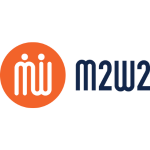After three years, the No One Leaves Alone (NOLA) Community Reintegration Project has come to an end. While the research project has concluded, we are excited to begin a new NOLA program.
Our Board of Directors approved NOLA as an 18-month pilot program starting in April. Like the research project, the program will provide practical support, mentorship, and encouragement to people returning to the community after incarceration. The five key areas of support—housing, health, education, employment, and relationships—will carry over, as will the circle model, which connects each participant with two or three volunteers and a Case Manager. Together, the circle stays in touch, meets regularly, and progresses toward goals they’ve set related to the five key areas.
Collaborative Approach
In addition to circle-based support, NOLA case managers work with other non-profit organizations and corrections staff to help NOLA participants access government services, health care, counselling, addiction treatment, and more.
In this collaboration, our case managers have earned the respect of their fellow professionals. For example, one parole officer said he hopes he can continue working with NOLA in the future, and expressed his appreciation for Allyson Johnson, a NOLA Case Manager, saying, “Allyson’s relationships with clients are characterized by stability, trust, compassion, and appropriate flexibility… She challenges our mutual clients to be more self-reliant.”
Who Is Eligible?
The NOLA program is designed for people who are recently released from prison and have a moderate to high risk to reoffend. This risk can be due to a range of factors including a lack of positive relationships and community support; a history of mental health and addiction; past trauma; and limited access to housing, education, and employment opportunities.
What Happens to Existing NOLA Members?
Of the NOLA project dynamic members, as of March 29, four will continue on and participate in the NOLA program. The rest will graduate—and move forward with the skills, relationships, and insights they gained through the NOLA project.
One NOLA member has expressed the desire to volunteer in the program, saying, “I want to give back to the community the way others gave to me to support a healthy reintegration.”
How Long Will NOLA Run?
The Board has approved NOLA as a pilot program, and will evaluate it after 18 months. During this time, we will work hard to secure the funding we need to ensure the longevity of the program.
How Can I Participate?
NOLA is built around volunteers—everyday people who are willing to share their skills, life experience, and time to see people return from prison to live positive, crime-free lives in the community. We provide an introductory volunteer course and regularly offer Next Level Training sessions to further equip our team. To learn more about volunteering with NOLA, email steve@m2w2.com.
What Does NOLA Cost?
Three years ago, we launched NOLA with a federal grant. That funding, however, has run its course. Now we need additional funds to cover NOLA’s operating costs. The previous fiscal year left us with a budget surplus, and these funds will get the program off the ground. Going forward, we need an additional $35,000 every month. To make this happen, we need financial partners. God has blessed us in the past and we are grateful for everyone who supports this initiative. To partner with us, donate online or contact our office. There is a great need to support people after incarceration—we believe NOLA has the experience and backing to help meet this need.
Those who have participated in the NOLA project attest to the value of the practical support they received: “You try to rebuild your life in community and you can’t do it by yourself,” said one participant. “NOLA cares and that’s why it works. It makes a total difference.”
We are excited to continue this work. Backed by the ongoing generosity of you, our donors, we know that change and success are possible.
This story originally appears in the Spring 2021 issue of our newsletter.

